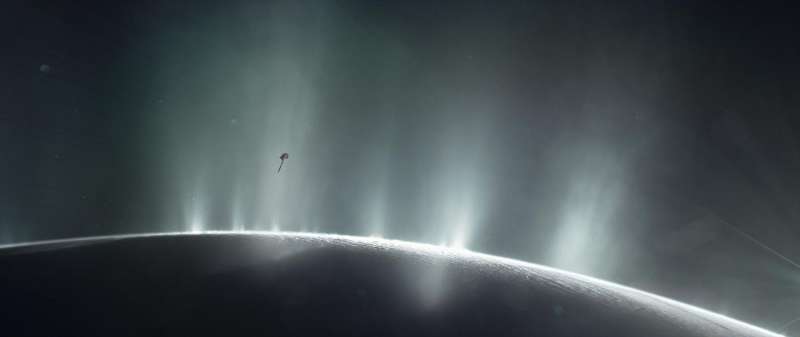Hidden lake discovery sheds light on alien hunt

Evidence of new strains of bacteria in a lake hidden under an Icelandic glacier far from the sun has revealed how life might thrive in sub-surface oceans on the icy moons around Saturn and Jupiter.
"Our preliminary results reveal new branches of life here," said Dr Gregory Farrant from Matís, a governmental research institute based in Iceland.
The lake – called Skaftárkatlar – is one of the best places on earth to study how life might evolve in the isolation of a subterranean ocean on a far away moon, as it lies beneath an ice sheet 300 metres thick and its waters have probably never been exposed to the atmosphere.
"It's tricky to analyse DNA of microbes that are totally new to science because there's no prior knowledge about them," explained Dr Farrant, who is the lead investigator on an EU-funded research project called AstroLakes. "We're dealing with a lot of unknowns."
The team is studying microorganisms found in 10 precious samples taken from the lake over the last decade. Sampling beneath the glacier is difficult – a pump pulses hot water down to melt the ice in a column and then a sampler is sent to the bottom, collecting small volumes of sulphur-rich water.
The work is predicated on the idea that underground oceans probably represent our best chance of finding life on other planets.
Water-rich jets
NASA's Cassini spacecraft has already detected organic molecules – the building blocks of life – by flying through geysers spouting hundreds of kilometres above the surface of Enceladus, one of Saturn's icy moons.
"By flying through the water-rich jets, the Cassini spacecraft has detected complex organic molecules as well as hydrogen, making Enceladus one of the most potentially habitable environments in this solar system," said Dr Gabriel Tobie, a planetary scientist from France's National Center for Scientific Research at the University of Nantes.
Using mathematical modelling, Dr Tobie and his team have mapped the thickness of the ice shell on Enceladus as part of the EU-funded Exowater project.
What they have discovered is while Enceladus' hidden ocean lies up to 35 to 40 kilometres beneath the icy surface at the equators, it could be less than 5 kilometres underground at the poles, a distance comparable to the ice caps on earth.
That's much thinner than originally believed, and makes the subsurface ocean potentially accessible during future space missions. It also suggests there may be hydrothermal vents on the ocean floor.
"This thinner crust implies that there is a huge heat source at this moon's interior which may power hydrothermal vents on the floor of this underground ocean," said Dr Tobie.
On earth, life spawns around ocean floor vents, despite the lack of oxygen and searing temperatures, raising the possibility that the same might happen elsewhere in the solar system.
Other moons, like Saturn's biggest moon, Titan, or Jupiter's moon, Europa, may also harbour these building blocks of life, and these research projects contribute more base reference points for future space missions to find out.
At the moment, NASA is considering a trip back to Enceladus in a proposed mission called Enceladus Life Finder, and to Europa in its Europa Clipper mission.
Iceland's Dr Farrant said: "Similar types of metabolisms are expected to occur in both places. Europa presents the conditions for life to emerge."
Provided by Horizon: The EU Research & Innovation Magazine





















